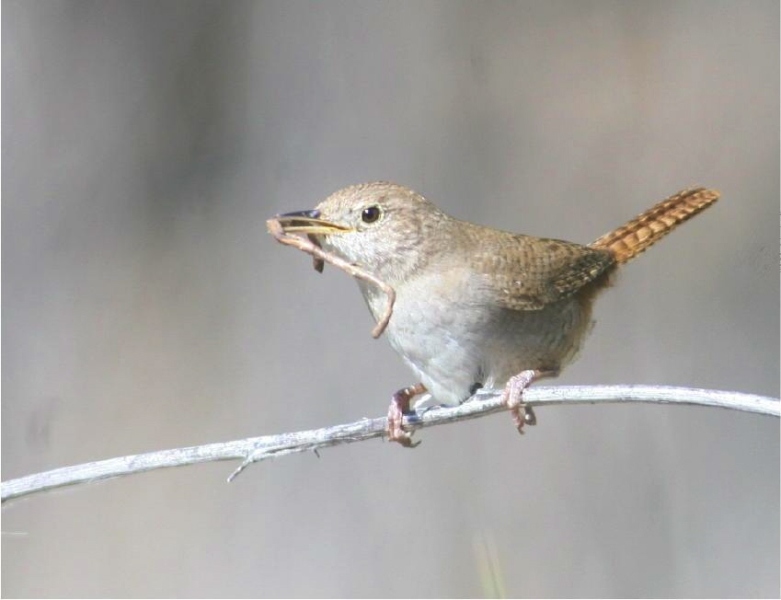The House Wren: A Very Perky, Plain Songster
By Dave Hanks
It has been several years since we have had House Wrens nest at our place. This year a pair has decided to stay. Their home is a bird box on the corner of our old chicken coop. It had never been nested in. Although, woodpeckers have enlarged the entry to get in out of the winter weather. Itís great to go out in the mornings and hear their cheery song seemingly all over our yard.
The male is a very busy bird. He will create more than one nest, hoping that one of them will attract one or several female companions. He is truly of a polygamous nature. They will use old woodpecker holes as nest sites, but it can be fairly easy to attract them to your yard by putting up some nest boxes. They especially like orchards and gardens where they can be an asset because of their consumption of caterpillars and other insects that make up the bulk of their diet.
House Wrens are 4 Ĺ to 5 Ĺ inches and weigh 10 to 13 grams. A major characteristic is their tail, which is usually in an erect position. The male is very territorial and his rich, bubbly song warns other males to stay away. His territory can range from 1/4 to 3 and 1/4th acres. Singing is done when nesting, but rarely afterwards, and different geographic birds have a marked variation to their songs.
This feisty and pugnacious bird will occasionally destroy the eggs of other birds by puncturing the eggshells. They may also fill up other nests with sticks to render them unusable. Research has shown that urban birds make more trips after food than rural ones. This is probably because cities usually have fewer and less variations of insects than farms do.
Nesting and feeding habits are easily observed because this species is rarely bothered by human presence. If you do get too close to the nest you are apt to be scolded.
(Gathering nest material)
|
